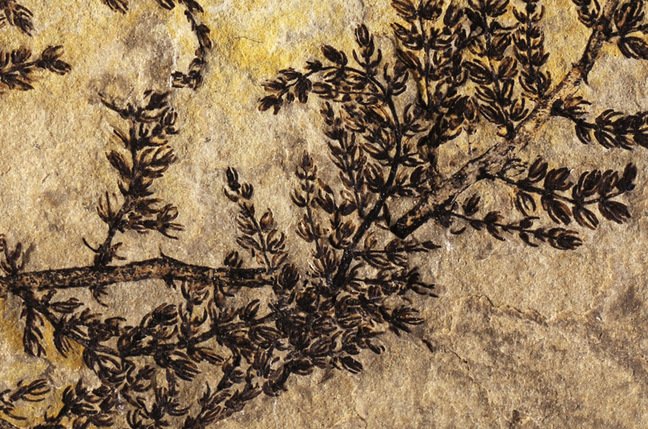Scientists in the U.S. have discovered what could be the world’s first flower. The fossilized underwater plant has stunned botanists worldwide as it includes no noticeable flower parts and grew deep in the lakes of modern day Europe.
Botanists have studied more than 1000 fossils of the species Montsechia Vidalii, a well known species among scientists. The studies revealed that the flowering plants grew deep in the lakes of modern day Spain approximately 125-130 million years ago.
The team of scientists from Indiana University led by David Dilcher, a paleobotanist, noted that, “were first discovered more than 100 years ago in the limestone deposits of the Iberian Range in central Spain and in the Montsec Range of the Pyrenees, near the country’s border with France.”
However, they reported that the species were “poorly understood and even misinterpreted.”
This was because the plants possessed no plainly noticeable or obvious flower parts. Dilcher reported that the Montsechia Vidalii, “possesses no obvious ‘flower parts’, such as petals or nectar-producing structures for attract.”
To clear the air on the species, the scientists resorted to coaxing stems and leaves from the ancient rock using hydrochloric acid while bleaching the pant’s cuticles using a mixture of nitric acid and potassium chlorate.
Microscopic details revealed that the species was indeed an angiosperm, more ancient than the previously discovered Archaefructus sinensis in China.
The report from Indiana University elaborates further on the plant by stating that the plant contained a single seed, in true semblance to an angiosperm.
“A ‘first flower’ is technically a myth, like the ‘first human’,” Dilcher said in the report published in the proceedings of the National Academy of Sciences.
The scientists now plan to study the Montsechia deeper to understand when precisely other species of angiosperms branched off from their ancient forefathers.
Dilcher said there was so much that was still unknown about the underwater flower, including whether the enormous seed bearing plants gave rise to the plants that now populate the earth.
The discovery of the Montsechia is the first step in figuring out the history of plant life on the planet. While man’s roots have been traced to evolution, plants’ beginnings are yet to be pinned down. The discovery could be the first step in doing just that.
Stay Connected